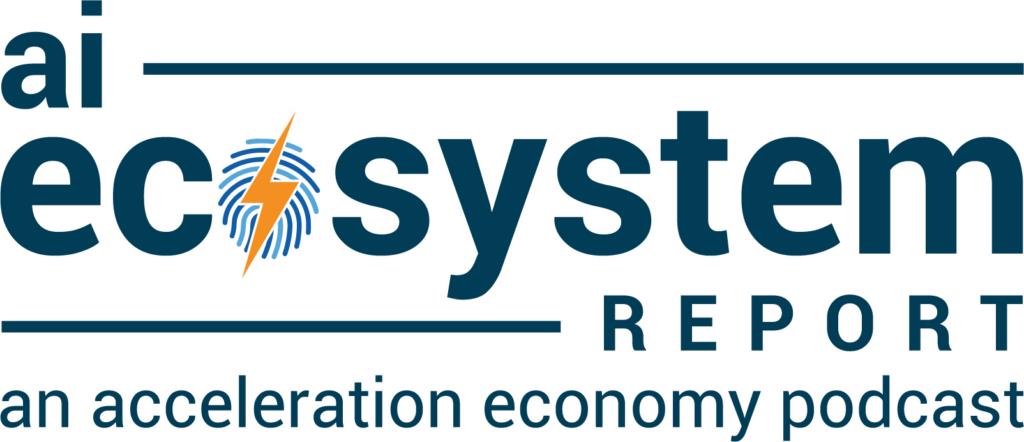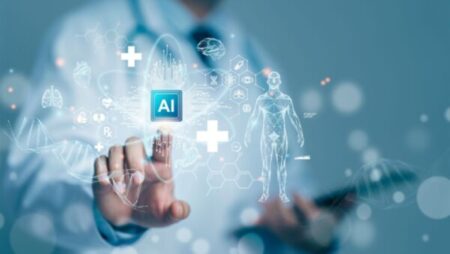Artificial intelligence (AI) and machine learning (ML) are experiencing significant adoption in the life sciences sector. Research and clinical studies, drug development, diagnostics, and marketing are the primary areas where AI and ML are being used for life sciences.
These technologies — in combination with natural language processing (NLP) which enables algorithms to learn from experiences — aid life science businesses by supporting rapid and efficient development of treatments, lowering healthcare costs and increasing patient access. For organizations to get the most out of these technologies, it’s important to implement a long-term strategy for AI and ML. In this analysis, I’m going to explain how to build and execute such a strategy.
To hear practitioner and platform insights on how solutions such as ChatGPT will impact the future of work, customer experience, data strategy, and cybersecurity, make sure to register for your on-demand pass to Acceleration Economy’s Generative AI Digital Summit.
Why ML Strategies Are Vital in Life Sciences
One segment of life sciences in which ML is particularly useful is healthcare. AI is able to analyze cancer scans and detect lesions with the aid of ML. For example, if healthcare professionals are unable to agree on whether a particular mass is cancerous, AI and ML algorithms can provide an additional perspective that informs the cancer diagnosis.
Of course, these technologies don’t come without their challenges. In ML, the black box issue refers to models in which it’s impossible to understand how an algorithm arrives at its results. This can be especially problematic in the life sciences industry, particularly with healthcare use cases.
Consider an AI app that might not be able to explain its methodology to an oncologist when the app is being used for cancer detection. If the doctor used this app to make a diagnosis, the doctor couldn’t explain to the patient why they were certain that the patient had cancer. This is why it’s critical to understand the models being implemented and have strategies in place for using ML models.
There is substantial hope that ML will enable healthcare workers to save time in applications like those I’ve described above; that’s especially important in light of the increase in cancer cases. According to the American Cancer Society, the number of people affected by cancer is expected to rise to 21 million worldwide by 2030. Combined with the ongoing healthcare talent shortage, the growth in cases illustrates dramatically why healthcare professionals need the help of technology including ML.

Which companies are the most important vendors in AI and hyperautomation? Check out the Acceleration Economy AI/Hyperautomation Top 10 Shortlist.
Manage ML as a Long-Term Strategy
Insights made possible by AI and ML have the potential to improve healthcare organizations’ business operations and bolster their efficiency in performing a wide range of administrative tasks. Tasks handled by AI and ML have been shown to be more reliable and take less time to complete than those of more traditional evaluation methods. Rather than focusing on immediate returns, optimizing return on an AI/ML investment requires a shift toward a more long-term plan and the use of cutting-edge approaches to data analysis.
I recommend that organizations adopt these three core elements as part of their long-term strategies for ML:
- Make use of data engineering techniques, including data mining and normalization, to address the fact that healthcare data is often challenging to work with because of the wide variety of sources and varying degrees of completeness.
- Showcase the worth of ML implementation to company leadership by tapping modern AI and ML tools to speed up release of proofs of concept and applications.
- Acquire the requisite technical expertise to develop purpose-built AI and ML systems that yield useful insights. Experienced life sciences data scientists are scarce because most data scientists are educated in sectors including retail, finance, and media. It is important to build a team of data scientists and give them enough time to understand the life sciences — or healthcare — systems and applications.
How to Implement ML in Your Organization
As detailed above, AI and ML can be incredibly beneficial for life sciences and healthcare organizations. So, how do you go about putting them to work successfully in your organization? I have five recommendations:
- Begin with smaller tasks and gradually increase their size as you progress. Then, when you work with large amounts of data, you will feel less overwhelmed.
- Define crystal-clear goals for the company. AI and ML can’t just intuitively figure out what you’re attempting to accomplish!
- Create a process to evaluate your progress. The AI and ML systems learn new things over time. Have patience and be ready for an iterative process that will, as time goes on, get stronger and provide incremental benefits, including ROI.
- Acknowledge and act on the need to earn people’s faith to make use of AI/ML-powered recommendations and forecasts. Some people may feel more at ease than others when presented with plans of action generated by machines.
- Keep in mind that AI/ML-driven initiatives are most effective when they are well-planned and executed. Develop a plan to try new things without fearing failure.
Final Thoughts
I can state with a high level of confidence that AI and ML will be crucial drivers for the life sciences industry in the future. Because the world has changed — and because the changes are expected to endure post-Covid-19 — we need to reimagine the way that we carry out many activities in the life sciences sector.
Despite encountering implementation difficulties due to stringent regulations, companies in the life sciences industry are expected to increase their AI and ML experimentation, and deployment, in the years to come. Core goals include making AI and ML usage profitable, socially viable, and easily adoptable for the general population.
However, the adoption of these technologies within this industry is still in its infancy. While we can see their potential now, there is still significant undiscovered potential. As tech leaders, we need to show the capability of these technologies to solve life sciences business problems and align our strategies accordingly.
Looking for real-world insights into artificial intelligence and hyperautomation? Subscribe to the AI and Hyperautomation channel:









